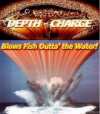Pitching or casting crank baits into shallow water is one of the most enjoyable ways to fish for walleyes early in the season. Some lakes like Devils Lake in north central North Dakota are notorious for producing shallow patterns where anglers routinely cast crank baits but these patterns can be effective well beyond Devils Lake. Casting crank baits into shallow water not only allows you to cover massive amounts of water, shallow fish are often utilizing some of the warmest water available in a system and are typically aggressive so shallow fish typically respond well to crank baits. Not to say that fish deeper wont respond to crank baits because they will but in my mind, fish that are percolating in that warm water tucked in close to shore when the water temperature across the lake is just starting to climb, that fish is primed for eating whatever comes in front of its nose. Walleyes will hit jigs right now, they hit swim baits, you can debate bait versus soft plastic and there are days where these options work better than crank baits but for finding fish, triggering aggressive strikes and just covering water to dial in the locations or sweet spots, nothing beats a crank. Not only are you typically reeling faster but you can also move the boat along the shoreline faster as you cover water.
Obviously, finding the right spot to key on is paramount and location is the starting point. You can’t catch fish that are not present. So often, the location of active fish is dictated by water temperature. Most sonar systems have a water temperature gauge. If you didn’t hook up the sensor when you rigged your boat…. Big mistake. I often like to just patrol through areas watching where warmer water is getting stacked along a particular shoreline. A degree or less can focus fish activity. Wind will often blow warm water into a particular area or some areas may warm up because they are protected from larger and colder pools of water but a temp gauge can give you the lay of the land and help you look at the big picture. Also, I strongly believe that the afternoon hours and early evening hours are the prime window for this kind of bite as the water warms up during the day.
Once the location is narrowed down, the presentation itself can also be adjusted. Finding the right lure or lures along with the right retrieve can be a frustrating process. Usually, how the lure hits the profile of a shoreline and retrieve speed or action is most important. When we talk about the profile of the shoreline, imagine what the bottom does under water between the boat and shore and imagine where the walleyes are laying or moving on that profile. On tough days, the fish are going to be tucked tighter to a particular lip on that profile and wont chase for very far. On easy days, the fish are suspended a touch off the lip and will chase what comes in front of them until they eat it. Some days, you have to get close to the fish with a lure, sometimes you have to get closer yet and that is typically determined by the dive curve. Thus experiment with shallow running lures that will go over the tops of grass and weeds but also clip the shoreline with lures that have a deep diving bill. Now obviously each shoreline will have different characteristics and change as you move along the shoreline so it really does pay to have different anglers in the boat throwing different lures and to switch up between a handful of lures until you dial in the pattern of the day. Go to crank baits for me include classic number five Shad Raps, number four and five Salmo Hornets, number five and seven Rapala Countdowns, the size 8 floating Salmo Perch and assorted Husky Jerks and Salmo Suspending Stings. Sometimes I might mix in a few Flicker Shads, Wally Divers and Rogues. What I do believe a crank bait does however that appeals to aggressive fish that want to chase is cranks put out extra flash and vibration that can be felt and seen further than jigs and soft plastics. With that being said, I often like to pop or snap the lure to get extra flash and vibration as I work it back to the boat. Snaps and stops often attract and trigger fish. Besides experimenting with lures that hit the profile correctly to get in a position in front of fish, how you cast towards shore can also be experimented with. You can cast right at the shore for example and reel directly back to the boat or you can cast ahead of the boat or behind the boat to keep the lure along a particular depth zone for longer periods of time. Speed or cadence is also a make or break variable. As a guide, I always kept all of the reels and rods the exact same so the gear ratios, spool diameters and line was exact so that I can have people in the boat match up when something started working.
One mistake I see many anglers make especially when things get difficult is they position the boat too close to the spot or shore and pound the area with short casts. When things get tough and you have to grind out fish, I think you can be much more effective by backing the boat off the spot and making longer casts even if part of the retrieve is over deeper water. On off days, I believe these walleyes will follow a lure and just get more temperamental but long casts give these followers more chances to nip until they get hooks in the jaw. If you are rolling fish at the boat at the end of your retrieve or can physically see following fish or just getting short bites, try backing off the spot and making longer casts. Ironically, larger or heavier lures that can be cast further often shine on tough days versus smaller lures because long casts often get bit on the tougher days.

The author Jason Mitchell is considered a master at catching walleyes by casting crank baits. Mitchell shares his secrets for success in this article |
Editors Note: The author Jason Mitchell earned a reputation as a top walleye guide on Devils Lake, North Dakota before hosting the television show, Jason Mitchell Outdoors which airs on Fox Sports North at 9:00 am Sunday mornings and Fox Sports Midwest at 8:30 am Saturday mornings. Show listings and schedule can be found at www.jasonmitchelloutdoors.com.







